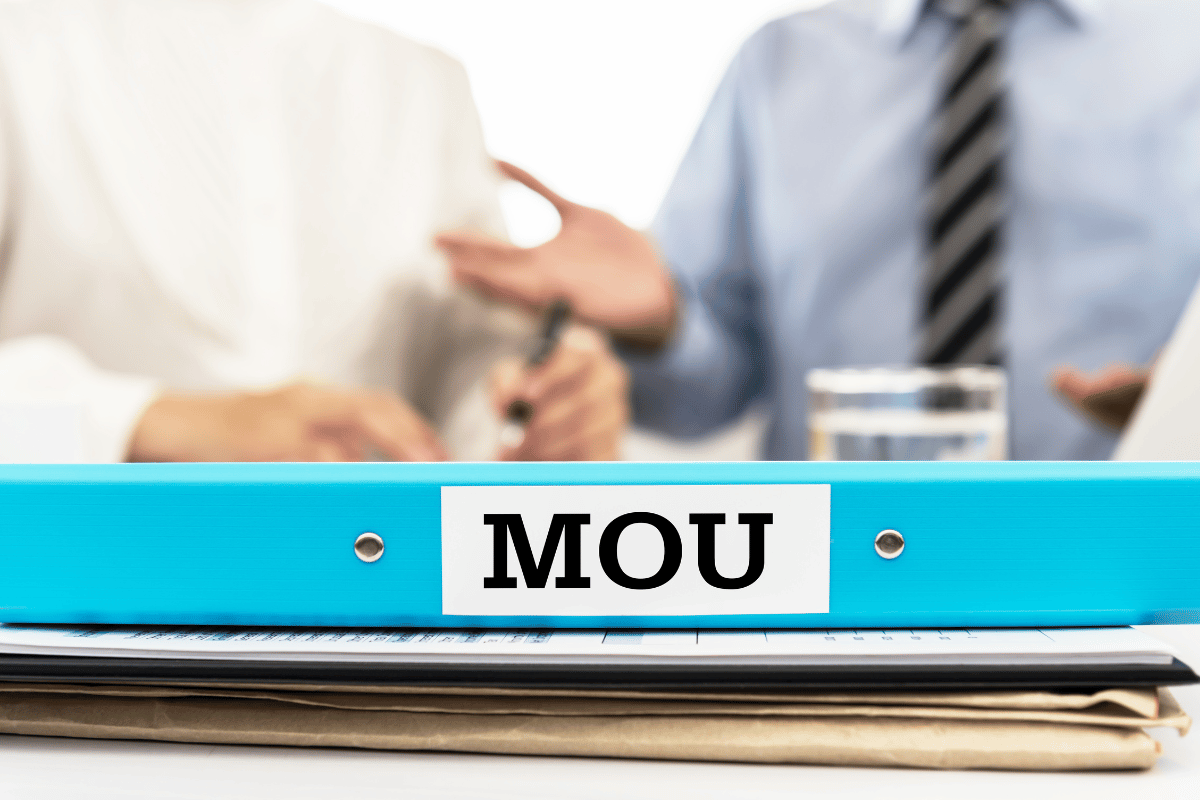Understanding the Memorandum of Understanding (MoU) – A Comprehensive Guide
A Memorandum of Understanding (MoU) is a formal agreement between two or more parties. Companies and organizations often use MoUs to outline the terms and details of their partnership or collaboration.
Unlike a binding contract, an MoU signifies an intent to proceed with an agreement without legal obligation. Despite its non-binding nature, an MoU carries significant weight in business and legal contexts as it delineates the responsibilities and expectations of each party.
Key Elements of an MoU Agreement
When drafting an MoU Agreement, it is crucial to include certain key elements to ensure clarity and mutual understanding. These elements include:
1. Purpose
Clearly state the purpose of the MoU. What are the parties aiming to achieve? This section provides the context and justification for the collaboration.
2. Parties Involved
Identify the parties involved in the agreement. This includes detailing the names, designations, and contact information of the signatories.
3. Scope and Objectives
Outline the scope of the collaboration and the specific objectives that the parties intend to achieve. This section helps in setting clear goals and avoiding any misunderstandings.
4. Roles and Responsibilities
Define the roles and responsibilities of each party. This ensures that everyone knows what is expected of them and helps in monitoring the progress of the agreement.
5. Duration
Specify the duration of the MoU. This includes the start date, end date, and any conditions for renewal or termination.
6. Financial Arrangements
If there are any financial aspects involved, such as funding, budget allocations, or revenue sharing, these should be clearly stated.
7. Confidentiality
Address how confidential information will be handled. This section is crucial for protecting sensitive data and maintaining trust between parties.
8. Dispute Resolution
Outline the methods for resolving any disputes that may arise during the collaboration. This can include mediation, arbitration, or other legal procedures.
9. Signatures
The MoU should be signed by authorized representatives of all parties involved. This signifies their commitment to the terms outlined in the agreement.
Benefits of an MoU Agreement
An MoU Agreement offers several benefits that can facilitate smoother collaborations and partnerships:
1. Clarity and Understanding
An MoU provides a clear framework that outlines the expectations, responsibilities, and objectives of the parties involved. This clarity helps in avoiding misunderstandings and ensuring everyone is on the same page.
2. Foundation for Formal Agreements
While an MoU itself is not legally binding, it serves as a foundation for more formal, binding agreements. It helps in laying down the groundwork and ironing out details before entering into a contract.
3. Flexibility
An MoU allows for flexibility as it can be easily amended or terminated based on mutual consent. This adaptability is particularly useful in dynamic business environments.
4. Trust Building
By clearly outlining the terms of the partnership, an MoU helps in building trust between parties. It demonstrates a commitment to collaboration and transparency.
Steps to Draft an Effective MoU Agreement
Creating an effective MoU Agreement involves several steps to ensure that it meets the needs of all parties involved. Here are the key steps:
1. Initial Discussions
Begin with initial discussions to understand the goals, expectations, and concerns of all parties. This stage is crucial for gathering information and identifying key points to be included in the MoU.
2. Drafting the MoU
Once the initial discussions are complete, draft the MoU. Ensure that all key elements, such as purpose, roles, and responsibilities, and dispute resolution methods, are included. Use clear and concise language to avoid ambiguity.
3. Review and Feedback
Share the draft with all parties for review and feedback. This collaborative approach ensures that the MoU addresses everyone’s concerns and requirements.
4. Negotiation and Amendments
Based on the feedback received, make necessary amendments to the draft. This stage may involve negotiations to reach a consensus on various terms and conditions.
5. Finalization
After all parties have agreed on the terms, finalize the MoU. Ensure that the document is free from errors and clearly reflects the agreed-upon terms.
6. Signing
Once the MoU is finalized, it should be signed by authorized representatives of all parties. The signatures signify their commitment to the terms outlined in the agreement.
7. Implementation and Monitoring
After the MoU is signed, implement the terms of the agreement. Regularly monitor the progress to ensure that the objectives are being met and address any issues that arise.
Common Pitfalls to Avoid
While drafting an MoU Agreement, it is important to be aware of common pitfalls that can undermine its effectiveness:
1. Vague Language
Avoid using vague or ambiguous language. Clearly define all terms and conditions to ensure mutual understanding.
2. Lack of Specificity
Ensure that the MoU is specific about the roles, responsibilities, and objectives. A lack of specificity can lead to misunderstandings and disputes.
3. Ignoring Confidentiality
Do not overlook the importance of confidentiality clauses. Clearly outline how confidential information will be protected and handled.
4. Inadequate Dispute Resolution Mechanisms
Ensure that the MoU includes effective dispute resolution mechanisms. This helps in addressing conflicts promptly and efficiently.
Summary
Memorandum of Understanding or MoU is the form of agreement which shows the delicacy of commitment of words written down onto the paper for the establishing seamless business relationships either with customers, or other businesses. Register Karo makes sure that your relationship is established in the most efficient manner by offering services pertaining to drafting the MoU for you.
Source
https://www.registerkaro.in/memorandum-of-understanding-mou


Leave a Reply
You must be logged in to post a comment.